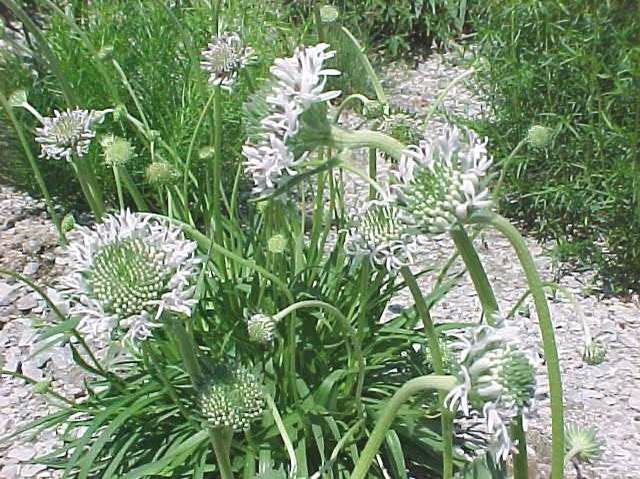Barbara’s Buttons (Marshallia Caespitosa)
Barbara's Buttons
Marshallia caespitosa, commonly called Barbara’s buttons, is a clump-forming perennial native to portions of the south-central United States. It can be found on calcareous glades and outcrops and in habitats with sandy soils. The dense flower heads of this aster (composite) family member are discoid (only disk flowers with no ray flowers). The numerous, tiny, white to pink-tinged disk florets are compacted into solitary, terminal, pincushion-like, dome-shaped flower heads (to 1″ diameter) atop long, rigid, slender stems (peduncles) rising to 16″ tall. Flowers somewhat resemble some of the cornflowers (Centaurea). Flowers bloom in spring. Narrow linear-lanceolate leaves (to 4″ long) mostly appear in basal rosettes, with sparse stem leaves being much smaller.
Genus name honors Humphry Marshall (1722-180- and his nephew Moses Marshall (1758-181- , American botanists.
Specific epithet means growing in dense clumps.

Easily grown in evenly moist to dry, well-drained soils in full sun to part shade. Tolerates some drought once established. Tolerant of most soil types as long as they are well draining. Will self sow in ideal conditions.
| Hardiness zone | 5 - 8 |
| Sun light | Full Sun To Part Shade |
| Water | Dry To Medium |
| Maintenance | Low |
No serious insect or disease problems.
Naturalize in limestone rock gardens, crevice gardens, border fronts and wildflower/native plant gardens.
| Common name | Barbara's Buttons |
| Botanical name | Marshallia Caespitosa |
| Plant type | Herbaceous Perennial |
| Family | Asteraceae |
| Hardiness zone | 5 - 8 |
| Water | Dry To Medium |
| Maintenance | Low |
| Flower color | White To Pink-Tinged |
| Flowering period | April - June |
| Height | 1 - 1.50 Feet |
| Width | 0.50 To 1 Ft. |